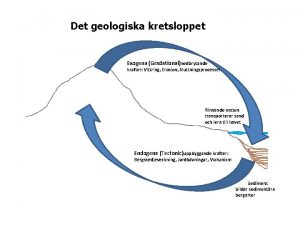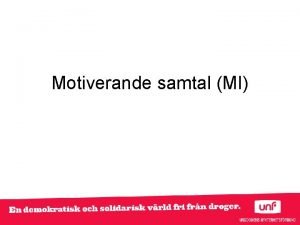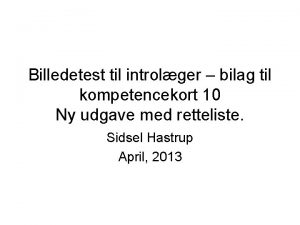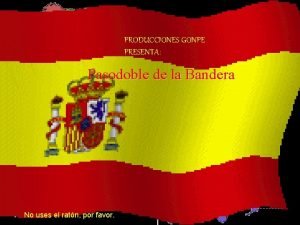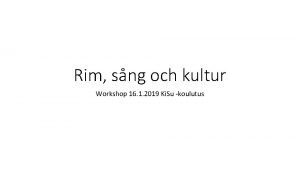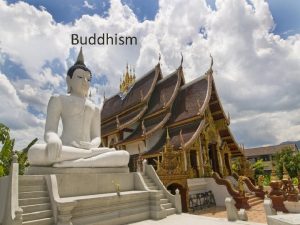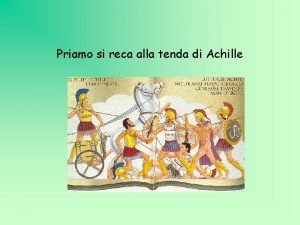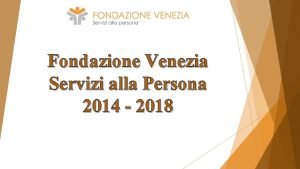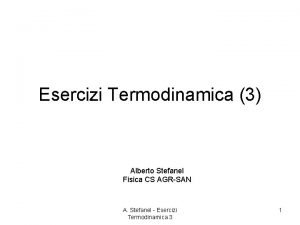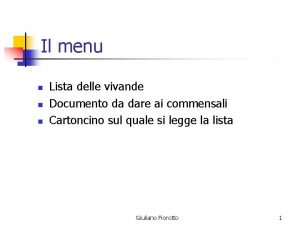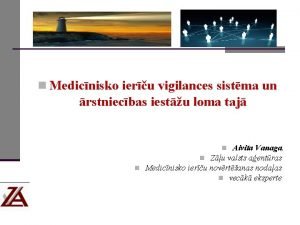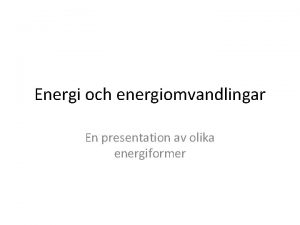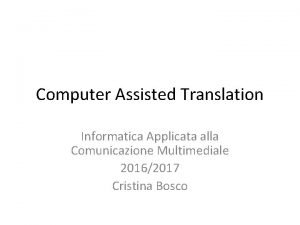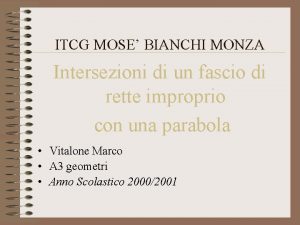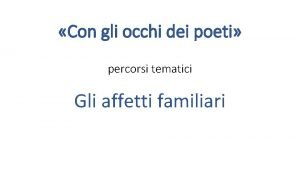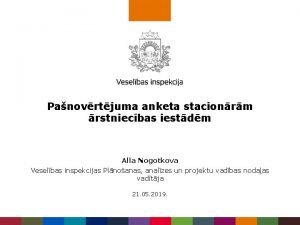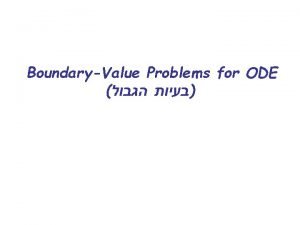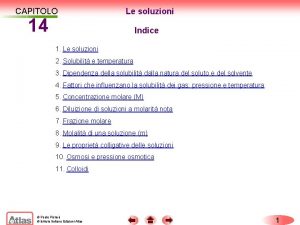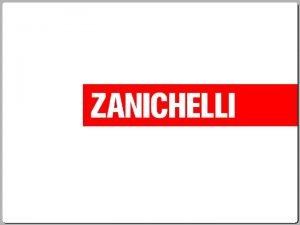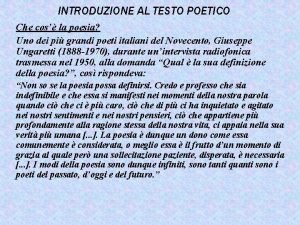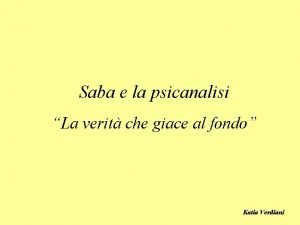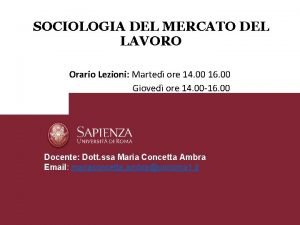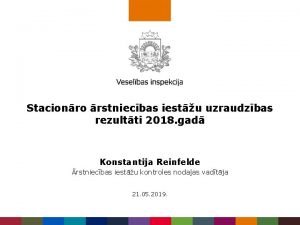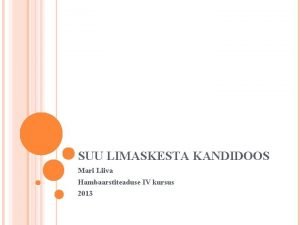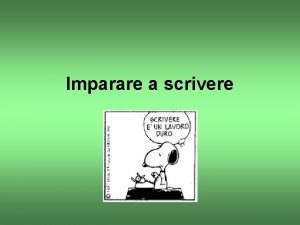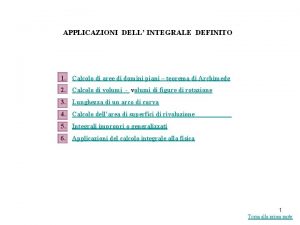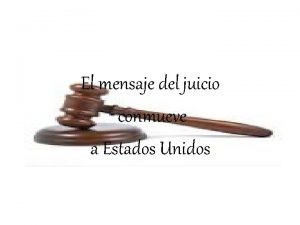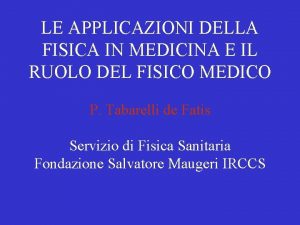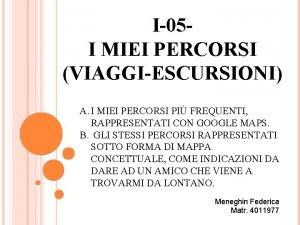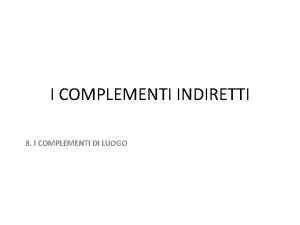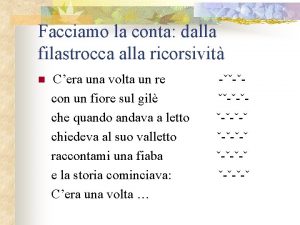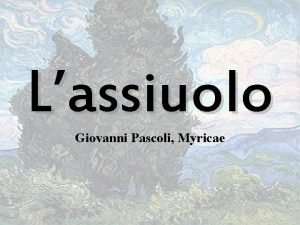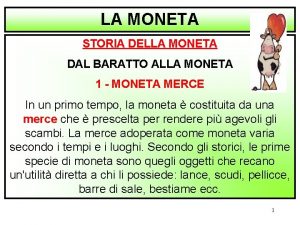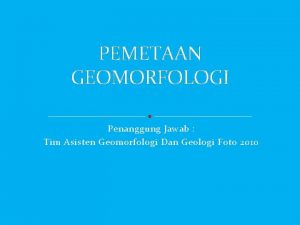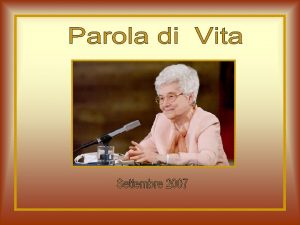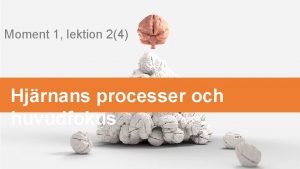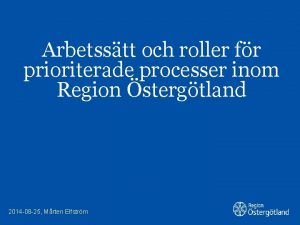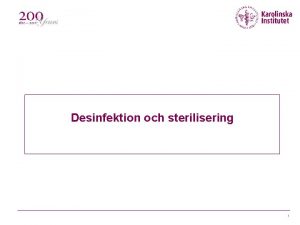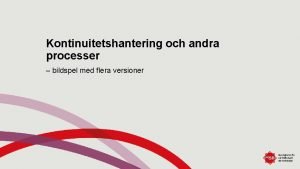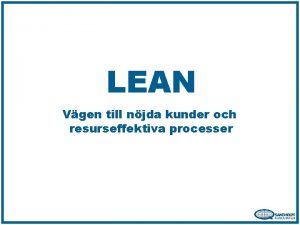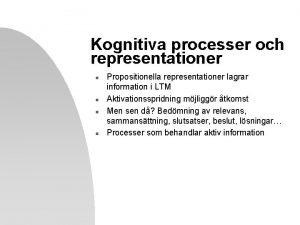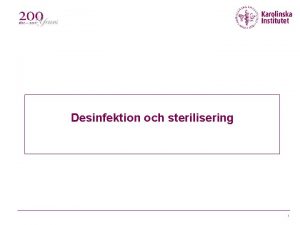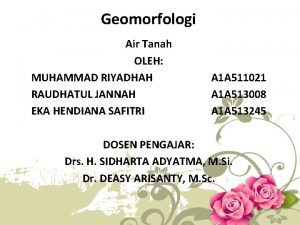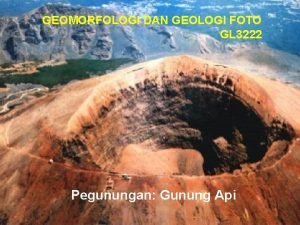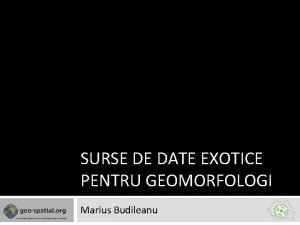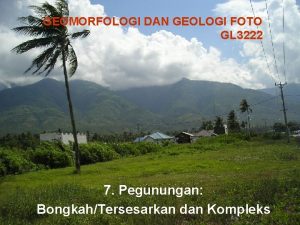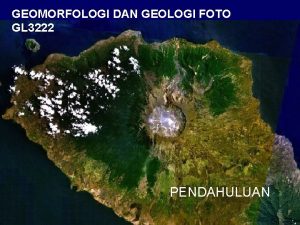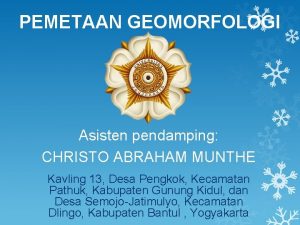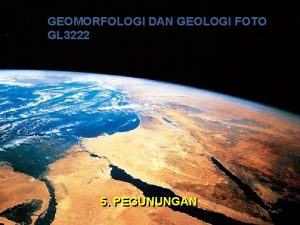Geomorfologi I Vittring och massrrelse Vittring Alla processer




















































- Slides: 52

Geomorfologi I: Vittring och massrörelse

Vittring • Alla processer som förorsaka bergrund/bergart att disintegrera fysiskt och bryta ner kemisk

Vittring • Fysiskt/mekaniskt vittring – Berggrund sprickas och brytas • Kemiskt vittring – Bergart mineraler blir kemisk transformerad • Regolit/vittringsjord: lager av jordart vid jordytan som resultat av vittring av underliggande berggrund.


Fysiskt/mekansisk vittring • Produceras material direkt från berggrund • Inkluderas följande processer: – Frost vittring – Tillväxt av salt-kristaller – Avlastning – Klyvning genom växt roter

Frost vittring • “A cold climate weathering process – Water penetrates the joints in rock, the water freezes, expands, the expansion produces outward pressure on the joint and the joint or crack enlarges”. – Hallet, 2006: Science, 314, 1092 -1093 • Landformer: rock glaciers, talus kon


Bergrund Disintegrering • Bergrund bryts genom bestående sprickor. • Vittring processer använda sprickor. – Block separation • Rock breaks along joints and bedding planes. – Grusvittring • weathering processes separate the individual grains of a coarse grained rock


Tillväxt av saltkristaller • Vittring process i torra och kustområden – Fukt migrerar till markytan genom kappilärt stigning av grundvatten – Vatten avdunstas och mineraler stannar kvar – Saltkristall växt leder till grusvittring • Effektivt i sandsten (poröst material)


Avlastning/exfoliation – Expansion av yttra berggrundslager vid erosion av överliggande berggrund. – Nedbrytning parallellt med jordytan i stora lager


Fler mekaniska vittringsprocesser • Expansion och krympning av material genom temperaturförändringar. • Växtrötter som tränger ner i sprickor i berggrund.

Kemiska Vittring • Nedbrytning och and förfall av mineraler i material genom kemiska förändring – Oxidation, hydrolys och genom karbonisk syre • Takten av kemiska vittring ökar med temperatur och fuktighet. • Producerar ett rundade landskap FEL

Hydrolys och Oxidation • • • Bergarts mineraler reagera med vatten för att producera nya mineraler. Producerar mjuk, lera-artig material som lätt eroderas. I torra klimaten kan hydrolys resulteras i grusvittring

Vittring genom syror • • Syra bildas av vatten och svavel, koldioxid och kvävedioxid. Vatten och CO 2 formar karbonisk syra som är mycket effektivt att lösa up kalksten Karst landformer Surt nederbörd

Mass rörelse • Rörelse av regolit och berggrund genom direkt påverkan av gravitation.


Mass rörelse processer – ett alternativt klassifikation

Mass rörelse mekanismer Flöde (viscous behaviour) Skred (plastic behaviour) Hävning

Creep/Krypning (Kanada)

Mark flöde i permafrost (Tibetansk platå)

Talus with dry grain flows (Frankrike)

Rock slope failure i kalksten (Alaska)

Slump (rotational slide) / Jordskred (Kalifornien)

Slump (rotational slide) /jordskred (Kalifornien)

Slump (rotational slide)

Mud flow / slammflöde (Kanada)

Debris flow / slammföde (Frankrike)

Lahar (Indonesien)

Sluttningar • Land surfaces that are inclined from the horizontal. • Mantled with regolith which is the source of sediment and soils. • Guide the downhill flow of water and sediment

Jord Krypning

Jordskred/ slammflöde

Slamflöde • Flowing mud of varying consistency – concrete to very fluid • Very fluid mudflows are called debris flows • Common in desert areas.

Landslides • Sliding of large masses of rock • Associated with steep slopes, earthquakes, mining.

Human Induced Mass Wasting • Piling waste into unstable accumulations • Removal of support by undermining • Scarification – Excavations and other disturbances for mining • Open pit and strip mines, gravel pits

Arctic and Alpine Tundra • Periglacial regions and landforms – Formed near ice and in cold areas. – Develop distinctive landforms of weathering and mass wasting due to the extreme cold. – Large annual temperature range = freezing and thawing.

Permafrost • Perennially frozen ground and bedrock (<0°C). • Found in tundra and boreal forest climates • Depth – Approximately 300 m thick – North America – 300 – 1000 m thick in Siberia • Much current permafrost is a remnant of the last ice age.

Types of Permafrost • Continuous permafrost – Extends without gaps under all surface features – Coincides with tundra climate • Discontinuous permafrost – Occurs in patches, frost free zones under rivers and lakes. – Coincides with the boreal forest climate • Sporadic permafrost – Occasional patches of permafrost exist. • Subsea permafrost – Below sea level in the shallow offshore zone • Alpine permafrost – Found at high elevations where average annual temperature is below freezing

Distribution of Permafrost • • Continuous Discontinuous Alpine Sub-sea

Permafrost Map Cross Sections

Permafrost • Active Layer – The surface layer that thaws seasonally, each summer. – Ranges in depth from 15 cm to 4 m. – Thickest in subarctic areas, becoming shallower towards the poles. • Talik – Unfrozen areas. – Often under lakes.

Energy Flows in Permafrost

Processes • Frost action – Wedging, heaving, thrusting, cracking • Mass movement – Transports the loosened debris • Facilitated by severe frost action • Lack of water drainage

Forms of Ground Ice • Ice Wedges – Form in silty aluvium – deltas and floodplains – Originate in cracks that form when permafrost shrinks during the cold. – Form over hundreds of years, cracking and filling with ice year after year.

Ground Ice • Ice wedge polygons – Intersecting ice wedges • Pingos – Large, ice cored, domelike features • Form from ice accumulating and forcing up the overlying sediments • 50 m high and 600 m in diameter. – Thousands in the Mackenzie Delta

Patterned Ground • Ice-wedged Polygons – Flat surfaces – Cracking creates straight sides of coarse stones with interiors of fine material. • Stone polygons or rings – Stone rimmed, circular forms, ranging from a few centimeters to several meters in diameter. – No cracking, freezing and thawing causes horizontal movement of pebbles and cobbles. • Stripes – Linear arrangements – circles and polygons influenced by gravity

Patterned Ground • Stone rings and stone stripes

Solifluction • Large tongue-like masses of surface debris • Due to thawing of the active layer • Moves 1 – 3 cm. / yr. • A scarp of 1 to 6 meters at the leading edge.

Alpine Tundra • Periglacial processes are found at high elevations where mean annual temperature is below freezing. • The elevation of continuous permafrost decreases with latitude.

Environmental Problems • Occur when insulating surface layers are disturbed. • Thermal Erosion – As a result, the active layer deepens, ice masses melt and the ground subsides. • Thermokarst – Subsidence and depressions • Thermokarst and streamflow in winter create engineering challenges in periglacial environments.
 Exogena krafter
Exogena krafter Geomorfologi laut
Geomorfologi laut Vcka
Vcka Rumopfyldende processer
Rumopfyldende processer Letra para que mi amor no sea un sentimiento
Letra para que mi amor no sea un sentimiento Letra banderita española
Letra banderita española Tjock och smal liten och stor
Tjock och smal liten och stor Likheter mellan hinduism och buddhism
Likheter mellan hinduism och buddhism Priamo si reca da achille
Priamo si reca da achille Fondazione venezia servizi
Fondazione venezia servizi Pzzlatedd
Pzzlatedd Termodinamica
Termodinamica Successione delle vivande
Successione delle vivande Mettersi alla prova
Mettersi alla prova Beata cirrose
Beata cirrose Alla nogotkova
Alla nogotkova Vad innebär energiprincipen
Vad innebär energiprincipen Informatica applicata alla comunicazione multimediale
Informatica applicata alla comunicazione multimediale Proposizioni coordinate
Proposizioni coordinate Alla formica rodari
Alla formica rodari La forma passiva esercizi
La forma passiva esercizi Retta esterna alla parabola
Retta esterna alla parabola Preghiera alla madre saba
Preghiera alla madre saba Alla nogotkova
Alla nogotkova Ode alla vita poem
Ode alla vita poem Frasi con proposizione oggettiva implicita
Frasi con proposizione oggettiva implicita Soluzioni chimica più capitolo 14
Soluzioni chimica più capitolo 14 Chimica piu capitolo 5 soluzioni
Chimica piu capitolo 5 soluzioni Susan sirel
Susan sirel Natura toetus
Natura toetus Divisione in sillabe alla sera
Divisione in sillabe alla sera Poesia eroica saba
Poesia eroica saba Reyneri introduzione alla sociologia del mercato del lavoro
Reyneri introduzione alla sociologia del mercato del lavoro Alla nogotkova
Alla nogotkova Imprese orientate alla vendita
Imprese orientate alla vendita Leukoplaakia
Leukoplaakia La lettera di ramesse
La lettera di ramesse Applicazione degli integrali alla fisica
Applicazione degli integrali alla fisica Introduzione alla psicologia della comunicazione
Introduzione alla psicologia della comunicazione Figuras profeticas de daniel
Figuras profeticas de daniel Fisica in medicina
Fisica in medicina Se hur vinden plockar alla rödgula löv ackord
Se hur vinden plockar alla rödgula löv ackord Microcomedão
Microcomedão Alla rotonda prendi la 3a uscita
Alla rotonda prendi la 3a uscita Complementi di luogo
Complementi di luogo Bum passa paperino con pipa bocca
Bum passa paperino con pipa bocca Nulla ha senso in biologia se non alla luce dell'evoluzione
Nulla ha senso in biologia se non alla luce dell'evoluzione Diametro biparietale inferiore alla norma
Diametro biparietale inferiore alla norma Alba di perla
Alba di perla Dal baratto alla moneta
Dal baratto alla moneta Tracce seconda prova tfa sostegno
Tracce seconda prova tfa sostegno Introduzione alla psicometria
Introduzione alla psicometria Ltp pru p3 allergia
Ltp pru p3 allergia
